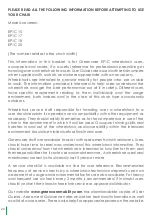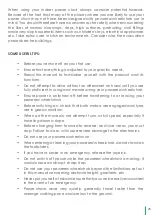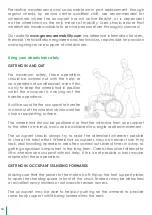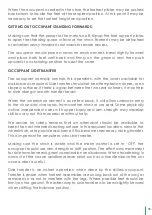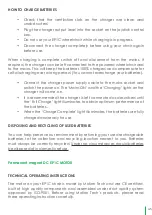
OUTDOOR VISIBILITY
This wheelchair is not designed to be used outdoors but if a user is out at
night, or in poor visibility conditions, users should ensure that they and the
wheelchair are visible to other road users and pedestrians, considering both
clothing, and light reflective trim features.
URBAN ENVIRONMENT
Greencare build wheelchairs to an assessed specification, which includes
environmental access considerations. Users should understand that they have
a responsibility to ensure that the environment is suitable for the wheelchair.
A relatively simple obstacle removal, may allow a door to open more fully or
provide turning space that will allow wheelchair operation. General safety is
improved when there is less clutter around on the floor.
Optional footrest mounting points will be covered by a protective plug to
prevent incorrect location when footrests are removed. Wheelchair users
should not attempt to change footrest positions without consultation with the
wheelchair service.
Building Regulations recognise the requirement for wheelchair access. Users
have a responsibility to bring concerns about this to the attention of those
responsible for public access.
ACCESSORIES AND ADDITIONAL EQUIPMENT
When accessories are fitted, using the wheelchair is more complex, and safe
routines should be practiced. Additions such as an elevating leg support or
a carry bag hanging from the push handles may have an adverse effect
on stability. Shopping bags or other additional heavy loads should not be
carried in a wheelchair. This particularly applies to hanging items over the
push handles, which can overload the chair.
The installation of postural support or seating system will inevitably change
the position of the occupant centre of gravity.
SAFE SLOPE
(up to 6 degrees)
A combination of slope and camber is common in many areas. For new users,
trying the chair out on typical surface conditions nearby is recommended;
having friends along is also a good idea, before venturing on a longer trip.
36

